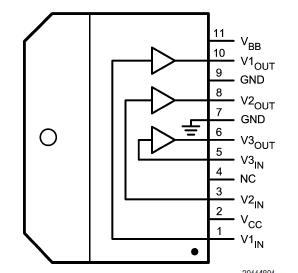LM2423: Features: ` 15 MHz bandwidth at 130VPP output swing` Up to 170VPP output swing with AC coupling to cathodes` 0V to 5V input voltage range` Stable with 0 pF20 pF capacitive loads and inductive peakin...
floor Price/Ceiling Price
- Part Number:
- LM2423
- Supply Ability:
- 5000
Price Break
- Qty
- 1~5000
- Unit Price
- Negotiable
- Processing time
- 15 Days
SeekIC Buyer Protection PLUS - newly updated for 2013!
- Escrow Protection.
- Guaranteed refunds.
- Secure payments.
- Learn more >>
Month Sales
268 Transactions
Payment Methods
All payment methods are secure and covered by SeekIC Buyer Protection PLUS.

 LM2423 Data Sheet
LM2423 Data Sheet








